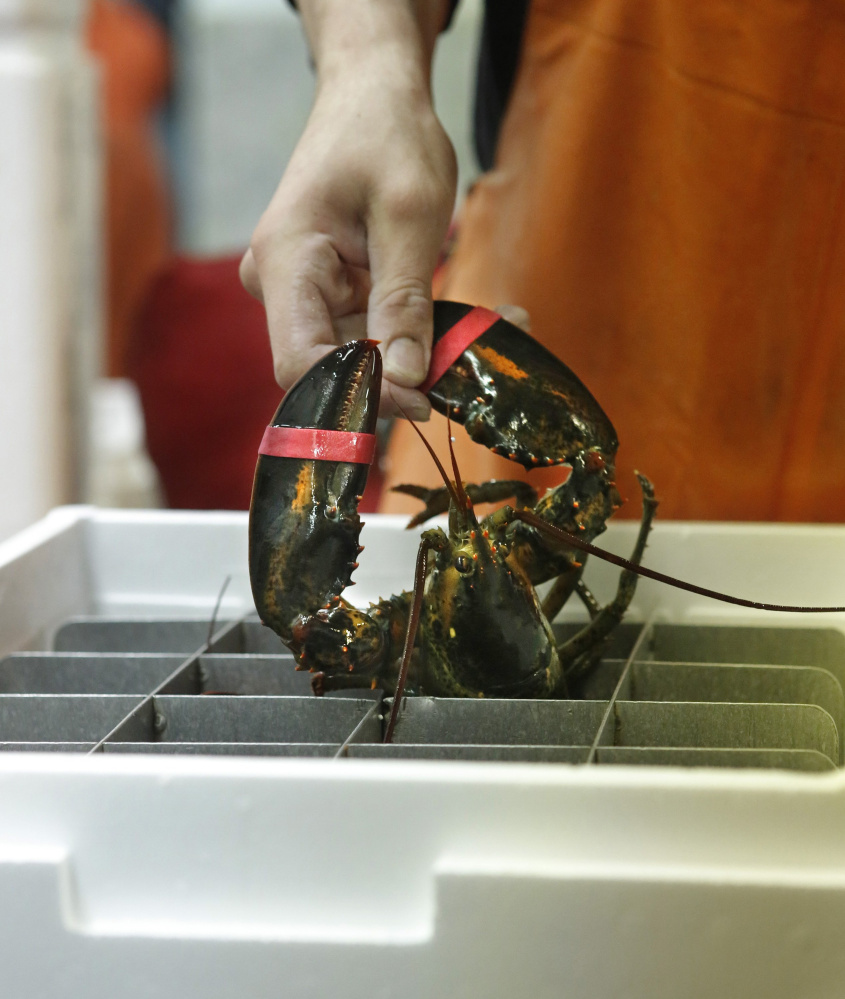The 16th-century expression “Waste not, want not” originated in America. By surveying the best seafood utilization practices around the world, Maine could lead the United States in reviving thrift and increasing profits and sustainability.
Maine lobster has become synonymous with value. But what if there were additional profits waiting to be unlocked in what we currently toss out?
Surprisingly, chitin, a natural polymer found in lobster shells, can be harvested and amassed for high-value agricultural, industrial and medical applications. Chitin from crustacean shells is just one example of 100 percent seafood utilization.
Just like Native Americans used every part of the buffalo, there are now opportunities to fully use seafood and push upward on the value chain. Investing time and resources in the utilization movement could generate new jobs, products and startups in Maine and beyond.
The Center for a Livable Future at Johns Hopkins University estimates that the United States wasted 4.6 million metric tons of edible and inedible seafood from 2009 to 2013. During this same period, the center calculated, at least 1.8 trillion milligrams of fish oil was wasted. With raw fish oil selling for $9 a pound and fish oil capsules selling for $370 a pound, the raw oil wasted in the United States represents millions of dollars in potential value if worked up to pharmaceutical quality. This is just one example of an opportunity for economic and environmental improvement.
Iceland has pioneered the 100 percent utilization movement, focusing on cod in particular. While most North Atlantic countries use around 45 percent of a cod, Iceland uses 80 percent on average, driving closer every day to 100 percent.
Instead of using fish only for filets, Icelandic companies have created enzyme-rich creams, cosmetics and collagen health drinks, to move up the value chain to complement traditional fishing industry uses.
The Icelandic model prevents high volumes of discard, contributes to stronger fish stocks and leads to more jobs and income throughout the supply chain.
To avoid losing opportunities, the time is right for the top fishing ports in Maine and around the United States, by both value and volume, to internally assess what percentage of seafood they utilize.
While significant change won’t happen overnight, Maine can be a leader in the United States in reviving the American tradition of optimization. For New England fishing ports, full utilization would benefit all levels of the supply chain, including remote workers, even in the face of reduced quotas. As a model, Iceland brought economic advantages to remote coastal dwellers by tripling the cost of cod because of the value-added demands. If Maine collaborated with research and innovation communities throughout New England, new applications could be discovered and nurtured, from cosmetics, to health food, to pharmaceuticals.
Critics of the utilization movement may argue that the waste problem has already been solved. However, fish products are currently used for relatively low-grade products, such as fertilizer. Higher-value products are possible.
High-end fish skin leather jackets and wallets, for example, which look like fashion out of “The Matrix,” elevate utilization to the next level. Recent research shows that seafood can be used for many other purposes, including biodiesel, carbon blocks and managing gastrointestinal cancer.
By spearheading internal assessments of what percentage of seafood is currently used in Maine’s processing, we could better understand the potential benefits of striving for 100 percent utilization domestically. The New England Ocean Cluster, based in Portland, has contributed to this process with a recent crustacean utilization analysis.
To dig deeper, utilization experts in Iceland also recommend investigating the larger systems at play in Iceland, such as the individual transferable quotas fisheries management system, which facilitated their country’s seafood success.
Today, pollution, ocean acidification and overfishing reduce seafood availability worldwide, so it is critical to do more with less. Setting a goal of 100 percent utilization could create new jobs in research and development, new companies and larger profits for existing businesses in Maine and beyond.
By transforming waste into wealth we can increase our independence and hopefully improve both the Earth and the economy for years to come.
Jack Whitacre of Freeport is a former boat captain and entrepreneur. He graduated from the Fletcher School of Law and Diplomacy and has received research support from the Institute for Global Leadership.
Send questions/comments to the editors.



Success. Please wait for the page to reload. If the page does not reload within 5 seconds, please refresh the page.
Enter your email and password to access comments.
Hi, to comment on stories you must . This profile is in addition to your subscription and website login.
Already have a commenting profile? .
Invalid username/password.
Please check your email to confirm and complete your registration.
Only subscribers are eligible to post comments. Please subscribe or login first for digital access. Here’s why.
Use the form below to reset your password. When you've submitted your account email, we will send an email with a reset code.